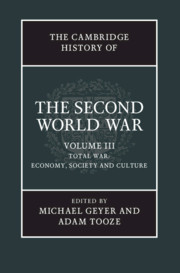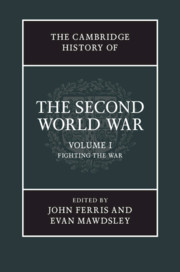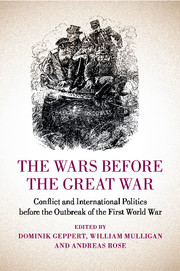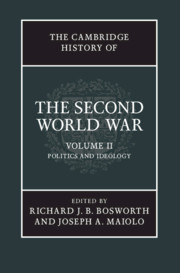Refine search
Actions for selected content:
15418 results in Military history
6 - Using online debates to map public reaction to the combat exclusion
-
- Book:
- Beyond the Band of Brothers
- Published online:
- 05 July 2015
- Print publication:
- 17 June 2015, pp 155-193
-
- Chapter
- Export citation
3 - It just doesn't feel right: emotion and the combat exclusion policy
-
- Book:
- Beyond the Band of Brothers
- Published online:
- 05 July 2015
- Print publication:
- 17 June 2015, pp 75-97
-
- Chapter
- Export citation
Conclusion
-
- Book:
- Beyond the Band of Brothers
- Published online:
- 05 July 2015
- Print publication:
- 17 June 2015, pp 194-199
-
- Chapter
- Export citation
1 - The combat exclusion is a story we tell ourselves … about men
-
- Book:
- Beyond the Band of Brothers
- Published online:
- 05 July 2015
- Print publication:
- 17 June 2015, pp 19-41
-
- Chapter
- Export citation
5 - Sex, cohesion, and national security
-
- Book:
- Beyond the Band of Brothers
- Published online:
- 05 July 2015
- Print publication:
- 17 June 2015, pp 134-154
-
- Chapter
- Export citation
Frontmatter
-
- Book:
- Beyond the Band of Brothers
- Published online:
- 05 July 2015
- Print publication:
- 17 June 2015, pp i-iv
-
- Chapter
- Export citation
Introduction: myths, men, and policy making
-
- Book:
- Beyond the Band of Brothers
- Published online:
- 05 July 2015
- Print publication:
- 17 June 2015, pp 1-18
-
- Chapter
-
- You have access
- Export citation
Index
-
- Book:
- Beyond the Band of Brothers
- Published online:
- 05 July 2015
- Print publication:
- 17 June 2015, pp 219-220
-
- Chapter
- Export citation
Dedication
-
- Book:
- Beyond the Band of Brothers
- Published online:
- 05 July 2015
- Print publication:
- 17 June 2015, pp v-vi
-
- Chapter
- Export citation
List of tables
-
- Book:
- Beyond the Band of Brothers
- Published online:
- 05 July 2015
- Print publication:
- 17 June 2015, pp ix-ix
-
- Chapter
- Export citation
Bibliography
-
- Book:
- Beyond the Band of Brothers
- Published online:
- 05 July 2015
- Print publication:
- 17 June 2015, pp 200-218
-
- Chapter
- Export citation
4 - Faster, stronger, more male: women and the failure of physical standards
-
- Book:
- Beyond the Band of Brothers
- Published online:
- 05 July 2015
- Print publication:
- 17 June 2015, pp 98-133
-
- Chapter
- Export citation

Naval Chronology
- Or, an Historical Summary of Naval and Maritime Events from the Time of the Romans, to the Treaty of Peace 1802
-
- Published online:
- 05 June 2015
- Print publication:
- 29 January 2015

Directions for Sailing to and from the East Indies, China, New Holland, Cape of Good Hope, and the Interjacent Ports
- Compiled Chiefly from Original Journals at the East India House
-
- Published online:
- 05 June 2015
- Print publication:
- 20 November 2014

The Cambridge History of the Second World War
-
- Published online:
- 05 June 2015
- Print publication:
- 23 April 2015

The Cambridge History of the Second World War
-
- Published online:
- 05 June 2015
- Print publication:
- 23 April 2015

A Voyage round the World, in the Years MDCCXL, I, II, III, IV
- Compiled from Papers and Other Materials of the Right Honourable George Lord Anson, and Published under his Direction, by Richard Walter, Chaplain to his Majesty's Ship the Centurion
-
- Published online:
- 05 June 2015
- Print publication:
- 23 October 2014

The Wars before the Great War
- Conflict and International Politics before the Outbreak of the First World War
-
- Published online:
- 05 June 2015
- Print publication:
- 07 May 2015

The Cambridge History of the Second World War
-
- Published online:
- 05 June 2015
- Print publication:
- 23 April 2015

Naval Chronology
- Or, an Historical Summary of Naval and Maritime Events from the Time of the Romans, to the Treaty of Peace 1802
-
- Published online:
- 05 June 2015
- Print publication:
- 29 January 2015
